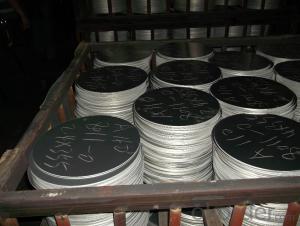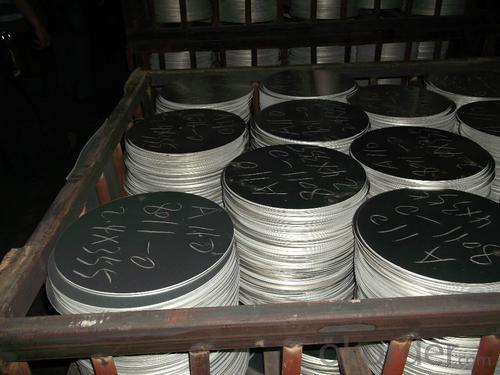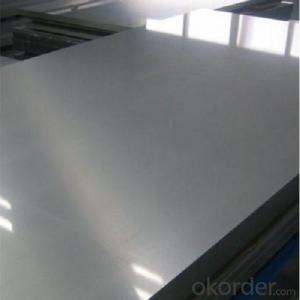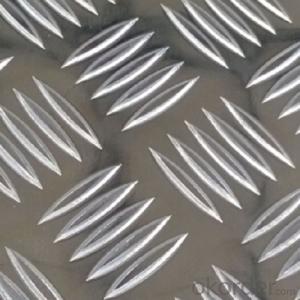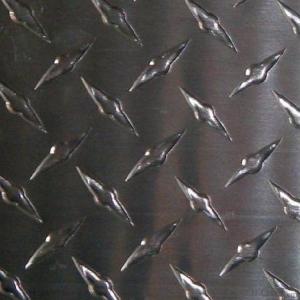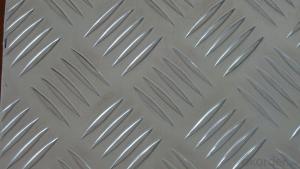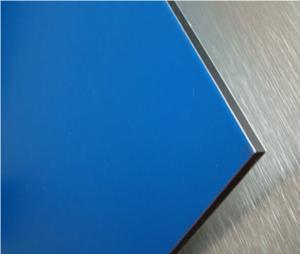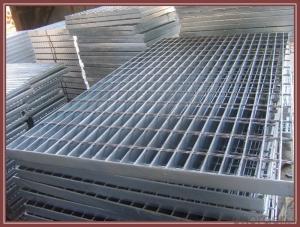5052 4mm Aluminum Awning Sheets - Checkered Plate for Household Use
- Loading Port:
- Shanghai
- Payment Terms:
- TT OR LC
- Min Order Qty:
- 1 m.t.
- Supply Capability:
- 6000 m.t./month
OKorder Service Pledge
OKorder Financial Service
You Might Also Like
Specification
5052 4mm aluminum checkered plate Household
Packaging & Delivery
| Packaging Details: | 25kg/carton-boxes(35*32*19CM) &Fumigation wooden-pallets (110*110*15cm) 20GP can loading 22 Ton,total 21 pallets,20 CBM. |
| Delivery Detail: | within 25 days |
Specifications
1).Excellent Surface Quality for lighting reflectors.
2).Excellent deep drawing and spinning quality.
3).Anodizing Quality
Aluminium circle/Aluminium discs/disks for cooking utensils Cookware
Aluminum disc Surface Finish: Bright & smooth surface, without flow lines, slightly oiled to avoid White rusting.Smooth,Brightly ,No Zone of Fracture ,No Scratched ,No oil Sludge
We enjoy a good reputation among our customers for our aluminum circle with high quality and competitive price, win high appreciation from our clients with the excellent workman-ship and professional ability. The quality matches with ISO 9001 quality management system.
It is equipped with 5 hot tandem rolling line, 4 cold mill production lines, 4 annealing surface machines and a complete finishing equipment.
Specification:
Alloy
Temper
Specification
Thickness
Diameter
1070,1050,3003,1100
O,H12,H14,H16
0.5-5.0mm
100-1200mm
Aluminum disc chemical Properties(WT.%)
Alloy
Si
Fe
Cu
Mn
Mg
Cr
Ni
Zn
Ca
V
Ti
Other
Min.A1
1050
0.25
0.4
0.05
0.05
0.05
-
-
0.05
-
0.05
0.03
0.03
99.5
1070
0.25
0.25
0.04
0.03
0.03
-
-
0.04
-
0.05
0.03
0.03
99.7
3003
0.6
0.7
0.05-0.2
1.0-1.5
-
-
-
0.1
-
-
-
0.15
96.95-96.75

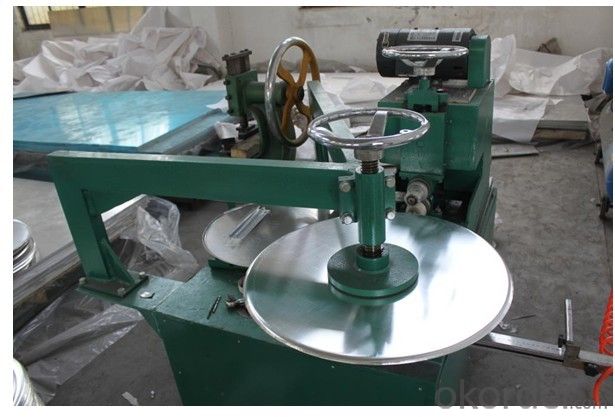
- Q: Hi everyone, I have this problem that I'm somewhat confused about. The problem is:An alloy of aluminum and magensium was treated with sodium hydroxide solution, in which only aluminum reacts to give hydrogen gas:2Al + 2NaOH + 6H20 --gt; 2NaAl(OH)4 + 3H2If a sample of alloy weighing 1.118 g gave 0.1068 g of hydrogen, what is the percentage aluminum in the alloy?How do I account for the magnesium and what stoichiometric relationships would I need to set-up? This is very confusing, but I appreciate the slightest of help on this!Thank you.
- You don't need to worry about the magnesium at all, because it doesn't enter into the reaction. You have a balanced equation for aluminium and hydrogen, and the data given are sufficient: From the equation, you know that 2 moles of aluminium produce 3 moles of H2. 0.1068 g of H2 were produced, so divide this by molecular mass of H2 (2.016) to determine the moles of H2 produced. You know that 3 moles of H2 would have been produced from 2 moles of Al. Therefore, multiply the moles of H2 by 2/3, to determine the moles of Al that were present. Now multiply this number by the atomic mass of Al, to determine the grams of Al. Now divide this number if grams by 1.118 and multiply by 100 to determine % Al present in the alloy.
- Q: I'm wanting to buy colorguard poles, and I found some good deals on aluminum and fiberglass ones. But what are the pros and cons of each one?
- I'd say fiberglass because... - Durability - Aluminum is a very bendable metal. It dents, it bends, and it breaks easier than any other metal pole you'll find. This is because it's a very low density metal. - Flexibility = more dramatic twirling due to pole flex, and it's less breakable. - Counter Weight = A flag on one side of the pole would be harder to move around swiftly without a counterweight. Thus a heavier pole would entail having a center of gravity on the flag pole closer to the hand, making it easier to maneuver the flag, but the pole would be harder to lift as a whole. I'm no expert on colorguard poles, though. Fiberglass has come a long way. While aluminum is always the same material, fiberglass is a constantly evolving building material.
- Q: Can 101 aluminum sheets be stamped or engraved?
- Certainly! Stamping or engraving 101 aluminum sheets is indeed possible. Aluminum, being a highly adaptable material, lends itself well to different manipulation techniques. Stamping entails exerting pressure to imprint a design or pattern onto the aluminum sheet, whereas engraving involves carving or incising a design onto it. Both methods can be applied to aluminum sheets, including those composed of 101 aluminum alloy. Nevertheless, it is crucial to take into account the thickness and hardness of the sheets, as these variables might impact the precision and sharpness of the stamped or engraved design.
- Q: Can the aluminum sheets be used for manufacturing chemical reactors?
- Indeed, chemical reactors can be manufactured using aluminum sheets. Renowned for its exemplary resistance to corrosion and remarkable thermal conductivity, aluminum is a suitable option for diverse industrial purposes, including the production of chemical reactors. Moreover, aluminum possesses the advantage of being lightweight and malleable, facilitating the creation of reactors with varying sizes and configurations. Nevertheless, it is crucial to acknowledge that selecting the appropriate materials for chemical reactors hinges on the particular demands of the process and the chemicals employed. In certain instances, environments characterized by corrosiveness or high temperatures may necessitate the utilization of more specialized materials.
- Q: I was looking at Audioque subs earlier and what is the difference between copper and aluminum coiled subs. do aluminum last longer or something?
- to maintain it common......Copper is better at removing or soaking up warmth than aluminum yet aluminum is better at dissipating it or doing away with it. i think it is why you spot aluminum CPU coolers with copper cores.
- Q: Are aluminum sheets suitable for thermal insulation?
- No, aluminum sheets are not suitable for thermal insulation as they have high thermal conductivity, meaning they are not effective in preventing heat transfer.
- Q: In which autocomponents usage of aluminium is better or otherwise?
- Aluminium is lighter as well as stronger than CI. Thats the reason most of the Automobile manufacturers use Aluminium for car bodies while they use cast iron for the underframes and internal chassis....NMN
- Q: Are 101 aluminum sheets suitable for lightweight structural applications?
- 101 aluminum sheets are appropriate for lightweight structural applications. Aluminum is well-known for its lightweight characteristics, making it a popular option for structural applications that prioritize weight reduction. The 101 aluminum alloy is specifically engineered to provide high strength and excellent formability, making it an ideal selection for various structural components. These sheets can be utilized in industries such as aerospace, automotive, and construction, where the emphasis is on reducing weight while maintaining structural integrity. Furthermore, 101 aluminum sheets possess good corrosion resistance, rendering them suitable for outdoor applications or environments with elevated moisture levels. In conclusion, 101 aluminum sheets are a dependable choice for lightweight structural applications due to their strength, formability, and corrosion resistance properties.
- Q: Can the aluminum sheets be used for roofing or siding purposes?
- Yes, aluminum sheets can be used for both roofing and siding purposes. Aluminum is a popular choice for these applications due to its lightweight nature, durability, and resistance to corrosion. It is commonly used in residential, commercial, and industrial buildings for its ability to withstand harsh weather conditions, including rain, snow, and UV rays. Additionally, aluminum is a versatile material that can be easily shaped, allowing for various design options.
- Q: Calculate the mass in grams of Iodine (I2) that will react completely with 20.4 g of aluminum to form aluminum oxide (AlL3)
- Aluminium oxide? Shouldn't it be Aluminium iodide? 1. Form a balanced equation 3I2 + 4Al - 2Al2I3 2. Number of moles of Al 20.4/(Mr of Al) = 20.4/27 = 0.7555mol 3. Number of moles of I2 0.7555/4 x 3 = 0.5666mol 4. Mass of I2 required = 0.5666 x Mr of I2 = 0.5666 x (127x2) Ans: 143.9164g
Send your message to us
5052 4mm Aluminum Awning Sheets - Checkered Plate for Household Use
- Loading Port:
- Shanghai
- Payment Terms:
- TT OR LC
- Min Order Qty:
- 1 m.t.
- Supply Capability:
- 6000 m.t./month
OKorder Service Pledge
OKorder Financial Service
Similar products
Hot products
Hot Searches
Related keywords
